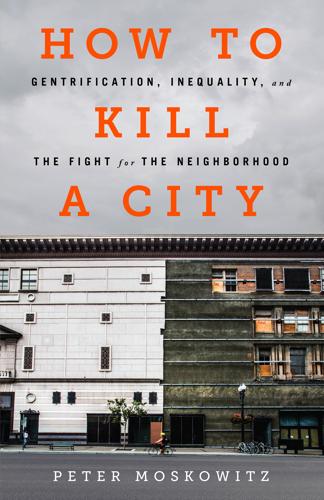
How to Kill a City: The Real Story of Gentrification
by
Peter Moskowitz
Published 7 Mar 2017
“Down here is the place to be,” he told me outside the store. “We’re on the cutting edge of everything going on.” The Albert is jointly managed by two of Detroit’s biggest development companies, Bedrock and Broder & Sachse. Bedrock, the largest in the city, is owned by Dan Gilbert, the head of Quicken Loans, one of the largest mortgage companies in the United States. And Dan Gilbert is a kind of cheerleader for the new Detroit. In 2010, he moved Quicken’s headquarters and its thousands of employees from the suburbs to downtown Detroit. Since then he’s been on a skyscraper-buying spree: he now owns at least eighty buildings downtown.
…
While Dan Gilbert is lavished with praise by the city government and newspapers, and while he and others receive hundreds of millions of dollars in tax breaks and other incentives, a new rail line, and bike lanes, the rest of Detroit has learned to live without streetlights and regular trash collection, without a consistent or helpful police presence, with hundreds of thousands of foreclosures on bad mortgages (some made by Gilbert’s Quicken Loans), with the persistent threat of water shutoffs from a broke water utility, with blight and bad schools and high poverty. Sure, it’s great that Detroit is to some extent being revitalized, but Detroit has been in need of revitalization for decades. Its population has been shrinking since the 1950s.
…
The biggest funder was the Kresge Foundation (mission statement: “Creating opportunity for low-income people”), which contributed more than a quarter of the total. Gilbert has also funded the revitalization of parks and plazas downtown. And there are other, less visible ways Gilbert has spread his vision of a bustling, millennial-filled core city. Employees of Compuware (owned by Quicken), Quicken Loans, DTE Energy (Detroit’s main energy company), and a few other companies can get $20,000 of forgivable loans to purchase a home or apartment within the downtown area, or $3,500 in rental subsidies. Midtown Detroit Inc. has a similar program that has raised $10 million from employers in the area to incentivize 2,000 people to live in Midtown, according to Sue Mosey.

All the Money in the World
by
Peter W. Bernstein
Published 17 Dec 2008
Sure enough, in 200234, just as Gilbert decided it was time to move on (in fact, at his very retirement party), Intuit chief executive Stephen Bennett offered to sell Quicken Loans back to Gilbert for a price that was later set at $64 million. Although the discrepancy between the 1999 purchase price and the 2002 sale price looks impressive, Gilbert points out that the deal was good for Intuit, too. Quicken Loans kept Intuit afloat during the dot-com crash, when so many other Internet companies were sinking. Even Intuit’s Bennett said35 that Quicken Loans helped it ride out the technology storm. And because Intuit bought Rock Financial with stock, Gilbert says it was able to sell the company back to him using stock for stock.
…
You try to be able to accept it when it works on your behalf.” That intersection of entrepreneurship and an emerging technology was a major factor in the success of yet another member of the Forbes 400: Internet loans billionaire Daniel Gilbert33, owner of the United States’ largest online mortgage lender, Quicken Loans—a company that he sold for $350 million in 1999 and bought back for $64 million three years later. Gilbert showed an entrepreneurial spirit from an early age. Using Chef Boyardee recipes, he started a pizza delivery business in Southfield, Michigan, when he was twelve. His friends delivered the pizzas by bicycle.
…
Intuit, the maker of Quicken financial software, was one of those companies looking to expand its online financial services. In 1999 it bought Rock Financial in a stock-for-stock transaction worth $532 million. Gilbert emerged with $350 million and also retained his job as head of the new company, now called Quicken Loans. Gilbert says his new owners hardly bothered him during the next few years as the business continued to grow. And he claims that although he could have left the company at any time, one of the reasons he stayed—apart from his commitment to the then six hundred employees—was the thought that Intuit might one day want to sell the company back to him: “I did have a sneaky suspicion in the back of my mind.”
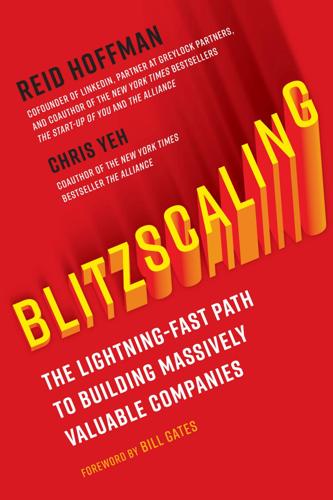
Blitzscaling: The Lightning-Fast Path to Building Massively Valuable Companies
by
Reid Hoffman
and
Chris Yeh
Published 14 Apr 2018
Outside of tech, scale can be an even bigger advantage. When Quicken Loans launched Rocket Mortgage, which provides mortgages online with a decision in less than ten minutes, Rocket Mortgage was able to tap into Quicken Loans’ consumer marketing expertise—including a Super Bowl ad—to acquire customers, and the company’s existing financial relationships to fund those mortgages. As a result, in its first full year of operation (2016), Rocket Mortgage originated $7 billion in loans, which would rank it in the top thirty of all mortgage lenders in the country if it was an independent company, and which helped push Quicken Loans’ overall closed loan volume to $96 billion, up sharply from $79 billion in 2015.
…
Its primary brands are Booking.com, priceline.com, agoda.com, KAYAK, Rentalcars.com, and OpenTable. Founded 1997, Stamford, CT ROCKET MORTGAGE RocketMortgage.com Through the Rocket Mortgage website or mobile app, users can upload financial details and get a mortgage loan decision in minutes. Quicken Loans launched Rocket Mortgage in November 2015, Detroit, MI SALESFORCE.com Salesforce.com Salesforce.com provides cloud-based applications for sales, service, and marketing, as well as enabling partners to offer and run their own solutions on the Salesforce Platform. Founded February 1999, San Francisco, CA SLACK Slack.com Slack provides cloud-based collaboration tools and services that connect teams with the apps, services, and resources they need to get work done.

The Metropolitan Revolution: How Cities and Metros Are Fixing Our Broken Politics and Fragile Economy
by
Bruce Katz
and
Jennifer Bradley
Published 10 Jun 2013
., bankruptcy lawyer, as Detroit’s emergency financial manager.79 The Detroit that the world knows is what historian Tom Sugrue describes as an “eerily apocalyptic” landscape of boarded-up shops, empty lots, burned-out buildings, roaming packs of dogs, and oddly pristine prairie land.80 What gets passed over in this harsh portrait is the recovery in the downtown and midtown areas of the city, which, along with the Eastern Market district and the riverfront, make up about 5.2 square miles—3.7 percent and 0.13 percent of the city’s and metro’s land masses, respectively.81 It is in this relative dot of a place that a world-class innovation district is slowly emerging, erected through a collaborative network 06-2151-2 ch6.indd 132 5/20/13 6:53 PM THE RISE OF INNOVATION DISTRICTS 133 of local leaders, amplified by a pervasive sense of do-it-yourself urbanism. What follows is just a small glimpse of what is happening. The downtown is being transformed by an idiosyncratic urban evangelist, Dan Gilbert, who happens to be the founder of the mortgage lending firm Quicken Loans and the owner of the National Basketball Association’s Cleveland Cavaliers. In 2007 Gilbert moved his firm’s headquarters from suburban Farmington Hills to downtown Detroit. Since then, he has brought more than 7,000 employees downtown and purchased more than fifteen buildings and two parking garages in the downtown area.82 The firm is now the third-largest landholder in the city of Detroit, behind the city government and General Motors.83 Gilbert’s purchases and building plans are all part of his Detroit 2.0 revival vision, “a lively live-work-play district in the heart of the city based around entrepreneurial companies in the digital economy.”84 Gilbert’s acquisitions, of course, built on existing assets: the downtown is a National Register Historic District, and more than fifty buildings are in the National Register of Historic Places.85 The Kresge Foundation contributed $50 million toward a major public-private reclamation and redevelopment project along the city’s riverfront, and public resources helped pay for a portion of the construction and landscaping of two new stadiums—Ford Field and Comerica Park.
…
Blue Cross Blue Shield of Michigan has moved 3,400 workers from the suburbs; now 6,400 of its employees work in five downtown buildings, with a large share of them at the Renaissance Center complex along the riverfront.86 Compuware and DTE Energy have had a strong presence downtown. (In fact, Compuware arguably started the downtown trend by building a fifteen-story headquarters in downtown Detroit in 2002, where Quicken Loans now has space.) A new subculture of entrepreneurial, tech-oriented start-ups, such as Digerati, Detroit Labs, and Stik, has emerged in the shadow of larger firms. All this action has not gone unnoticed by sophisticated investors. In 2010 Connecticut-based Atlas Holdings LLC purchased several companies that separately owned an energy-from-waste facility in the downtown 06-2151-2 ch6.indd 133 5/20/13 6:53 PM 134 THE RISE OF INNOVATION DISTRICTS as well as an underground steam loop, providing heating for many large buildings and facilities in downtown and midtown Detroit.
…
Since its inception in 2007, the initiative has supported or created several investment funds for start-ups and provided capital for significant place-making infrastructure, particularly in TechTown in midtown and its surrounding area, and its grants have helped launch 417 new companies, create 6,700 jobs, and leverage $261 million in additional investment in start-up companies supported by its grantees.100 06-2151-2 ch6.indd 139 5/20/13 6:53 PM 140 THE RISE OF INNOVATION DISTRICTS Living Cities, another philanthropic consortium, has invested $22 million in the Woodward Corridor Initiative to “redensify” the corridor and realize the full potential of the transit investment.101 The Kresge Foundation alone committed $150 million over the next five years to implement the recommendations and strategies outlined in the Detroit Future City report, doubling down on the investments it has already made along the riverfront, in M1 Rail, in the planning for the Detroit Future City effort, and as part of both the New Economy Initiative and Living Cities.102 In 2011 the Henry Ford Health System, the Detroit Medical Center, and Wayne State University, along with state and philanthropic support, launched the Live Midtown initiative, which provides financial incentives for employees who move to the area and entices existing renters and homeowners to stay and reinvest.103 Based on the program’s success, a group of downtown corporations—Quicken Loans, Blue Cross Blue Shield, Compuware, Strategic Staffing Solutions, Marketing Associates, and DTE Energy—created the Live Downtown Initiative. And, yes, creative individuals and entrepreneurs are taking responsibility for their blocks and streetscape in the absence of local government services. Finally, the revival in Detroit has been accomplished, for the most part, without deliberate or purposeful action by either the federal government or the state government.

Dark Towers: Deutsche Bank, Donald Trump, and an Epic Trail of Destruction
by
David Enrich
Published 18 Feb 2020
A year later, in 2015, Vrablic’s group at Deutsche extended a $15 million personal credit line to Jared and his mother, Seryl Kushner. It was the largest lending facility they had, and they quickly borrowed $10 million at a very favorable interest rate. On the evening of August 6, 2015, ten Republicans gathered in Cleveland’s Quicken Loans Arena for the party’s first presidential debate. Two months into his candidacy, Trump had amassed a remarkable double-digit lead in early polls. Almost everyone dismissed it as a fluke, but there was no denying that Trump, at least for now, was leading the pack. Fox News was the sponsor of the two-hour debate, and one of the moderators was Megyn Kelly.
…
See Banca Monte dei Paschi di Siena Moore, Simon, 287 Morandi, Michael, 208, 223, 226–27, 228, 230, 285 Morgan Grenfell, 24–25, 42–43 MortgageIT, 131–32, 136–37, 138, 139, 195, 340, 360 Mortgage Observer, 276–77 Moscow, John, 330–33 Moscow College of Agriculture, 213 Mountain Home Inn (Mill Valley), 256 Muccia, Daniel, 241–42, 249, 264 Mueller, Robert, 342–43 Museum Tower (New York City), 76, 95, 140 NatWest, 74 Nazi Party, 19–21, 23, 66–67, 182, 213 Neiberger, Christopher, 105, 105n Netanyahu, Benjamin, 159 New York blizzard of 1996, 71 New York Department of Financial Services, 236 New York Mercantile Exchange (NYMEX), 69 New York Observer, 172, 276, 277, 336–37 New York Palace Hotel, 14n New York Post, 301, 301n New York Rangers, 168 New York Stock Exchange, 95–96 New York Times, 140, 169, 307 New York Yankees, 168 Noble, Dan, 354 North American blizzard of 1996, 71 Northern Pacific Railway, 13, 14–15, 17–18 North Korea and Sony Pictures hack, 252–55, 281 Northwestern University, 32 Nothing Personal: A Novel of Wall Street (Offit), 308 Obama, Barack, 147, 176, 269–70, 339–40, 344 citizenship conspiracy theories, 176, 269–70 Obamacare, 241 Occupy Wall Street, 163–64 O’Connor, Sinéad, 90, 229 Office of the Comptroller of the Currency, 343 Offit, Avodah, 68 Offit, Kenneth, 68, 76 Offit, Mike, 68–72, 308 background of, 68–69 at Goldman Sachs, 69–72 Nothing Personal, 308 Trump campaign and presidency, 308–309, 334–36 Offit, Mike, at Deutsche Bank, 72–74, 170 firing, 80, 81, 308 hiring, 72–74 Trump loans, 75–80 Offit, Morris, 69 Offit, Sidney, 68, 78 O’Malley, Sean, 332 O’Neal, Stanley, 49, 86 Orange County bankruptcy, 40–41, 49, 295 Organisation for Economic Co-operation and Development (OECD), 146 Otting, Joseph, 343 OxyContin, 320 Palio di Siena, 154, 303 Panama Papers, 199, 341 Paul, Weiss, Rifkind, Wharton & Garrison, 237–38 PayPal, 322 Pelosi, Nancy, 353 Philipp, Michael, 55, 57, 63 appointment to vorstand, 85 hiring, 46–47 Mitchell and Estelle, 60–61 Mitchell’s death, 89 retirement, 101, 102 September 11 attacks (2001), 94–95 Pitt, Brad, 254 Postbank, 148, 234 Powell, Dina, 320 Presidential campaign of 2016. See Trump, Donald, presidential campaign of 2016 Prevezon, 331 Princeton Club (New York City), 44, 45 Procter & Gamble, 38, 64–65 Project Maiden, 131 Project Osprey, 64–67 Publicis, 102–103 Pulp Fiction (movie), 59 Putin, Vladimir, 109, 162, 179, 197, 200, 339, 344 Qatar, 347, 347n Quicken Loans Arena, 277–78 Racism, 124–25, 182 Ramakrishna, Satish, 237, 238–39 Red Army Faction, 26 Reeves, Joshua, 105, 105n Renaissance Technologies, 152–54, 186, 237–39, 325, 348 Republican National Committee, 246 Return on equity, 99–100 Reuters, 256–57, 279 Risk Academy, 107 Ritalin, 282 Ritchotte, Henry, 135, 183–84, 195–96, 234, 267 Ritter, Mark, 117–18 Roach, Bob background of, 153 Senate tax-avoidance investigation, 153–54, 195, 236–37 Senate tax-avoidance report, 237–39, 294 Trump loans and Russia, 328–30, 354 Roberts, John, 337 Rocco, Victor, 292–95 Rocky Mountain Academy (RMA), 217 Rogen, Seth, 253 Rolling Stones (band), 133–34 Ross, Howard, 167 Ross, Steve, 170–71 Ross, Wilbur, 320, 338 Rossi, David, 193–94, 244, 301, 302–303 Royal Courts of Justice, 288 Rubin, Robert, 46, 69–70 Russia Deutsche Bank’s United Financial acquisition, 108–109, 131, 196–97 VTB Bank, 109–10, 197, 317–18, 327, 328–29 Russian and Turkish Baths (New York City), 39, 123, 246 Russian Commercial Bank, 327 Russian interference in 2016 election, 312, 315, 328, 342–43, 344 Russian Laundromat, 197, 198–202, 232–33, 236, 340 Russian money laundering, 110–11, 118, 198–202, 231–33, 236, 315, 317–18, 327, 339, 340, 344 Kushners and, 312–13, 312n Trump and, 118, 312, 315, 318, 328–30 Russian Mortgage Bank, 327 Russian sanctions, 339 Ryan, Charlie, 108–9, 110 Saatchi Gallery (London), 1–2 Saint Thomas, U.S.
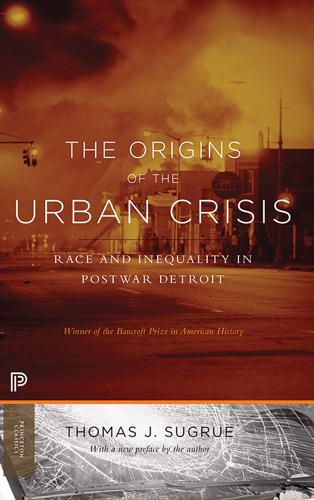
The Origins of the Urban Crisis
by
Sugrue, Thomas J.
And to attract investment, particularly in downtown, business improvement districts began providing extra services such as landscaping, security, and street cleaning to make the district safer and more attractive. The payoff is clear: new sidewalks, an outdoor café, music venue, and a popular wintertime ice rink in then downtown’s once forlorn Campus Martius Park. Two major firms, Compuware and Quicken Loans, moved downtown; and their workers patronized a slew of new restaurants, coffeehouses, retro cocktail bars, and other entertainment venues. Major developers, including Quicken Loans CEO Dan Gilbert, purchased downtown properties, with an eye toward attracting much more commercial and residential development to a downtown that is still quite empty.32 But it will take more than a few thousand hipsters or white urban professionals or avid sports fans to revitalize a sprawling, mostly African American, working-class city of more than 700,000.

The End of the Suburbs: Where the American Dream Is Moving
by
Leigh Gallagher
Published 26 Jun 2013
“The whole corporate campus seems a little dated,” Joe Mansueto, CEO of Morningstar, which has always been in Chicago, told Crain’s Chicago Business in an article about the city’s many corporate campus reverse migrations (“Like the disco ball, the regional shopping mall and the McMansion, the suburban corporate headquarters campus is losing its charm,” the story began). It’s not just Chicago. In New York City, UBS is said to be mulling plans to return to Manhattan from Stamford, Connecticut, where it moved in the mid-1990s. In 2011, Quicken Loans relocated from suburban Livonia, Michigan, to downtown Detroit. In Philadelphia, venture capital firm First Round Capital moved from suburban Conshohocken to University City. The list goes on and on as companies competing for younger workers realize they need to move to where the talent wants to live.
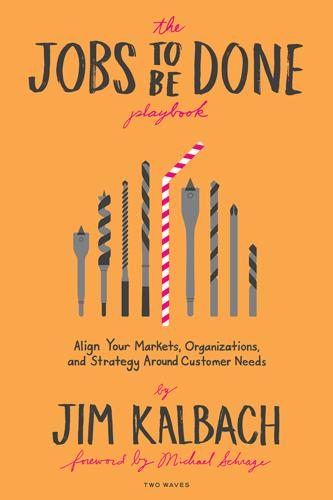
The Jobs to Be Done Playbook: Align Your Markets, Organization, and Strategy Around Customer Needs
by
Jim Kalbach
Published 6 Apr 2020
After 25 years of existence, the company continues double-digit growth in spite of the fact that the average lifespan of S&P 500 companies is now under 20 years. So why isn’t Intuit dead? For one, Intuit also makes courageous moves, expanding into new markets quicker than others, often through acquisition (e.g., Mint.com and Quicken Loans). And employees are also encouraged to take risks. Experimentation is part of the company culture. But Intuit doesn’t just make strategic guesses. Underpinning its seemingly leap-of-faith decisions is a firm grounding in customer needs at the executive level. Focusing on the job to be done allows Intuit to find continued opportunity for growth and consistently provide solutions that customers value.
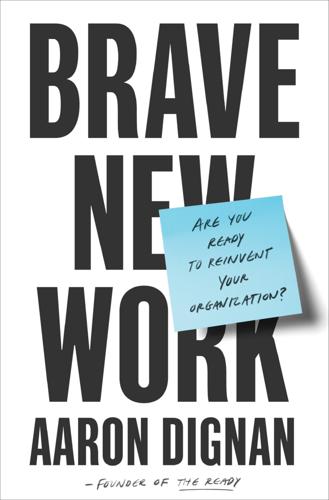
Brave New Work: Are You Ready to Reinvent Your Organization?
by
Aaron Dignan
Published 1 Feb 2019
Evolutionary Organizations AES Askinosie Chocolate Automattic Basecamp Black Lives Matter Blinkist Bridgewater Buffer Burning Man Buurtzorg BvdV charity: water Crisp David Allen Company dm-drogerie markt elbdudler Endenburg Elektrotechniek Enspiral Equinor Evangelical School Berlin Centre Everlane FAVI Gini GitLab Gumroad Haier Handelsbanken Haufe-umantis Heiligenfeld Hengeler Mueller Herman Miller HolacracyOne Ian Martin Group / Fitzii Incentro John Lewis Joint Special Operations Command Kickstarter Lumiar Schools Medium Menlo Innovations Mondragon Morning Star Nearsoft Netflix Nucor Orpheus Chamber Orchestra Patagonia Phelps Agency Pixar Premium-Cola Promon Group Red Hat School in the Cloud Schuberg Philis Semco Group Spotify stok Sun Hydraulics Treehouse USS Santa Fe Valve Whole Foods W. L. Gore WP Haton Zalando Technology Zappos Zingerman’s Sources of Inspiration Airbnb Amazon Chipotle Chobani Danone North America Etsy Facebook GitHub Google Johnsonville Lyft Quicken Loans Slack Southwest Airlines Stack Overflow Toyota Warby Parker WeWork Wikimedia Zapier USING THE OS CANVAS The canvas can provoke incredible conversations and powerful stories. It can help you and your team identify what to amplify and what to change.
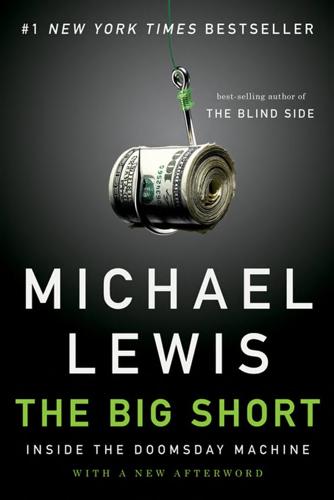
The Big Short: Inside the Doomsday Machine
by
Michael Lewis
Published 1 Nov 2009
In 1933, during the fourth year of the Great Depression, the United States found itself in the midst of a housing crisis that put housing starts at 10% of the level of 1925. Roughly half of all mortgage debt was in default. During the 1930s, housing prices collapsed nationwide by roughly 80%." He harped on the same theme again in January 2004, then again in January 2005: "Want to borrow $1,000,000 for just $25 a month? Quicken Loans has now introduced an interest only adjustable rate mortgage that gives borrowers six months with both zero payments and a 0.03% interest rate, no doubt in support of that wholesome slice of Americana--the home buyer with the short term cash flow problem." When his investors learned that their money manager had actually put their money directly where his mouth had long been, they were not exactly pleased.

This Is Life
by
Dan Rhodes
Published 1 Mar 2012
Prior to this run of Life, he had spent nine months on the road as a technician for Lady Gaga, during which time over three million people had seen his work, and he had undergone sex with the star of the show four times – in her dressing room, on a plane, in a cupboard full of fire extinguishers and, best of all, as part of a threesome under the bleachers at the Quicken Loans Arena in Cleveland, Ohio, while an impatient audience stamped their feet, and chanted her name. Le Machine’s principal creative collaborator, his sound designer, would be quite content to go back to his day-to-day life, playing his gigantic saxophone as part of a quartet in half-empty bars while living off the royalties that still came in from some soft rock radio hits he had co-written back in the nineties.
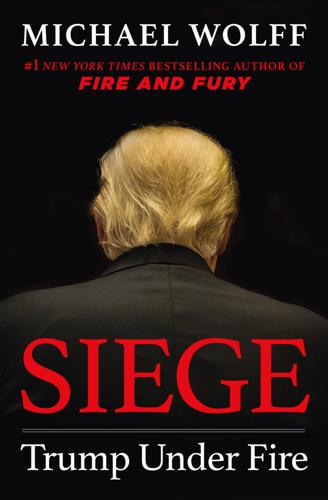
Siege: Trump Under Fire
by
Michael Wolff
Published 3 Jun 2019
In the ceremonial East Room at the White House, the president’s staff had staged a mock Election Day barbecue with hamburgers and hot dogs. It was a big-donor event. Sheldon Adelson, worth $34 billion, was there, along with Harold Hamm, the shale oil mogul, worth $13 billion; Steve Schwarzman, the Blackstone CEO, worth $12 billion; Dan Gilbert, the founder of Quicken Loans and owner of several sports franchises, worth $6 billion; Michael Milken, the former Wall Street trader and junk bond king who went to jail in the early 1990s for insider trading, worth $4 billion; and Ron Cameron, an Arkansas poultry mogul, and Tom Barrack, the Trump friend and real estate mogul who had managed the president’s inauguration, each worth a billion.

Cities Are Good for You: The Genius of the Metropolis
by
Leo Hollis
Published 31 Mar 2013
The new owner, 25-year-old Andy Didorosi, promises to run the scheme at cost, but has reduced the service to one bus riding a loop through the main neighbourhoods. There are some positive signs of regrowth even as discussion of right-sizing continues. Although not the solution in itself, downtown Detroit is becoming attractive once more to businesses. In summer 2011 Quicken Loans moved into the Chase Tower from the suburbs, bringing 4,000 employees into downtown. Owner Dan Gilbert has gambled heavily on the rebirth of the city centre, buying real estate, investing in retail, as well as encouraging other businesses into the area. One of the markets that could see real growth is technology start-ups and Gilbert has also set up Detroit Venture Partners to take advantage of the new culture.
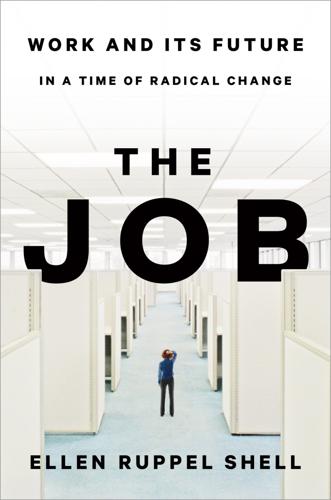
The Job: The Future of Work in the Modern Era
by
Ellen Ruppel Shell
Published 22 Oct 2018
This leads to polarization, with high-paid newcomers luxuriating at the top and onetime blue-collar workers stranded in low-wage service work. Essentially, the working class becomes the servant class to the “better educated” or “more talented.” For example, on a visit to Detroit, it was impossible not to notice that Quicken Loans, the nation’s largest mortgage vendor, had all but taken over the city’s financial district. The company’s thousands of young professional employees, many if not most of them from outside the Detroit area, had swamped the real estate market, raising rents and forcing locals out. Avoiding this problem requires completely rethinking development strategies to build on the skills and strengths embedded in local and regional culture.

Your Face Belongs to Us: A Secretive Startup's Quest to End Privacy as We Know It
by
Kashmir Hill
Published 19 Sep 2023
GO TO NOTE REFERENCE IN TEXT frequently serenaded his friends: The events at the Republican National Convention were recounted by Charles Johnson in an interview with the author, 2021, and confirmed with photos and videos he provided, as well as a video posted to YouTube that shows Ton-That laughing after Johnson has a confrontation with a journalist on the street. GotNews, “Jamie Weinstein Assaults Charles C. Johnson,” YouTube, July 21, 2016. GO TO NOTE REFERENCE IN TEXT Huge photos of NBA superstar LeBron James: Don Muret, “Quicken Loans Arena Transforms for Republican National Convention,” Sporting News, July 18, 2016. GO TO NOTE REFERENCE IN TEXT The main topic: This meeting and much of description of Ton-That and Johnson’s activities at the Republican National Convention are based on author’s interviews with Charles Johnson, 2021–2022.

Connectography: Mapping the Future of Global Civilization
by
Parag Khanna
Published 18 Apr 2016
This map of America’s functional mega-regions tells us how America actually works and how to improve it through greater connectivity.*4 PACIFIC FLOWS So what happens to Detroit? There is no single template for urban revival—or survival. Loyal Detroit billionaires such as Dan Gilbert of Quicken Loans have bought up downtown office space, financed a light-rail project, and are paying for the removal of residential and industrial blight. Such piecemeal steps rejuvenate the city’s shrunken urban core, making it tidy and livable for the fraction of the original population that remains while demolishing both the glorious and the miserable past.
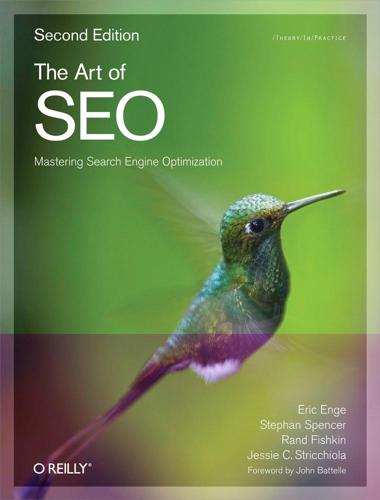
The Art of SEO
by
Eric Enge
,
Stephan Spencer
,
Jessie Stricchiola
and
Rand Fishkin
Published 7 Mar 2012
Additional Factors That Influence Link Value Classic PageRank isn’t the only factor that influences the value of a link. In the following subsections, we discuss some additional factors. Anchor text Anchor text refers to the clickable part of a link from one web page to another. As an example, Figure 7-10 shows a snapshot of part of the Quicken Loans home page at http://www.quickenloans.com. Figure 7-10. Anchor text: a strong ranking element The anchor text for the first link in the list of Popular pages in Figure 7-10 is “Refinancing.” The search engine uses this anchor text to help it understand what the page receiving the link is about (i.e., in this case the search engine will interpret the link as saying that the page receiving the link is about refinancing).

Eastern USA
by
Lonely Planet
Sports Cleveland is a serious jock town with three modern downtown venues. Whatever you do, don’t mention the name ‘LeBron’ (the basketball player who famously defected to Miami). Progressive Field BASEBALL (www.indians.com; 2401 Ontario St) The Indians (aka ‘the Tribe’) hit here; great sightlines make it a good park to see a game. Quicken Loans Arena BASKETBALL (www.nba.com/cavaliers; 1 Center Ct) The Cavaliers play basketball at ‘the Q,’ which doubles as an entertainment venue. Cleveland Browns Stadium FOOTBALL (www.clevelandbrowns.com; 1085 W 3rd St) The NFL’s Browns pass the football and score touchdowns on the lakefront. Performing Arts Severance Hall CLASSICAL MUSIC ( 216-231-1111; www.clevelandorchestra.com; 11001 Euclid Ave) The acclaimed Cleveland Symphony Orchestra holds its season (August to May) at Severance Hall, located by the University Circle museums.

USA Travel Guide
by
Lonely, Planet
Sports Cleveland is a serious jock town with three modern downtown venues. Whatever you do, don’t mention the name ‘LeBron’ (the basketball player who famously defected to Miami). Progressive Field BASEBALL (www.indians.com; 2401 Ontario St) The Indians (aka ‘the Tribe’) hit here; great sightlines make it a good park to see a game. Quicken Loans Arena BASKETBALL (www.nba.com/cavaliers; 1 Center Ct) The Cavaliers play basketball at ‘the Q,’ which doubles as an entertainment venue. Cleveland Browns Stadium FOOTBALL (www.clevelandbrowns.com; 1085 W 3rd St) The NFL’s Browns pass the football and score touchdowns on the lakefront. Performing Arts Severance Hall CLASSICAL MUSIC ( 216-231-1111; www.clevelandorchestra.com; 11001 Euclid Ave) The acclaimed Cleveland Symphony Orchestra holds its season (August to May) at Severance Hall, located by the University Circle museums.